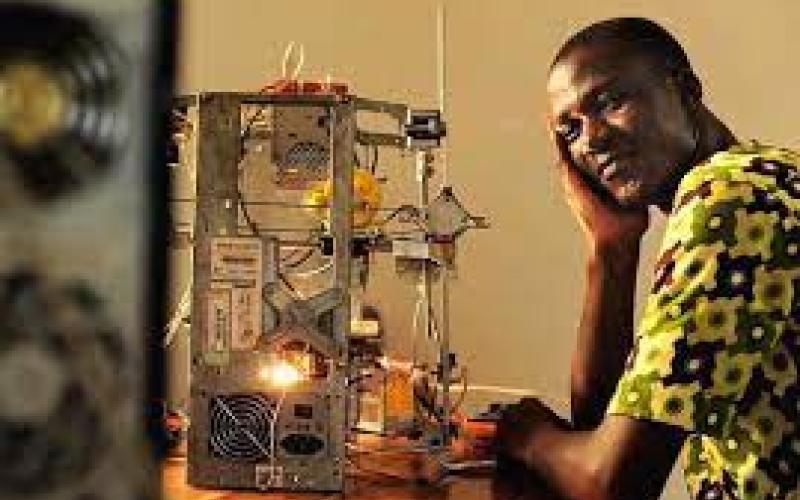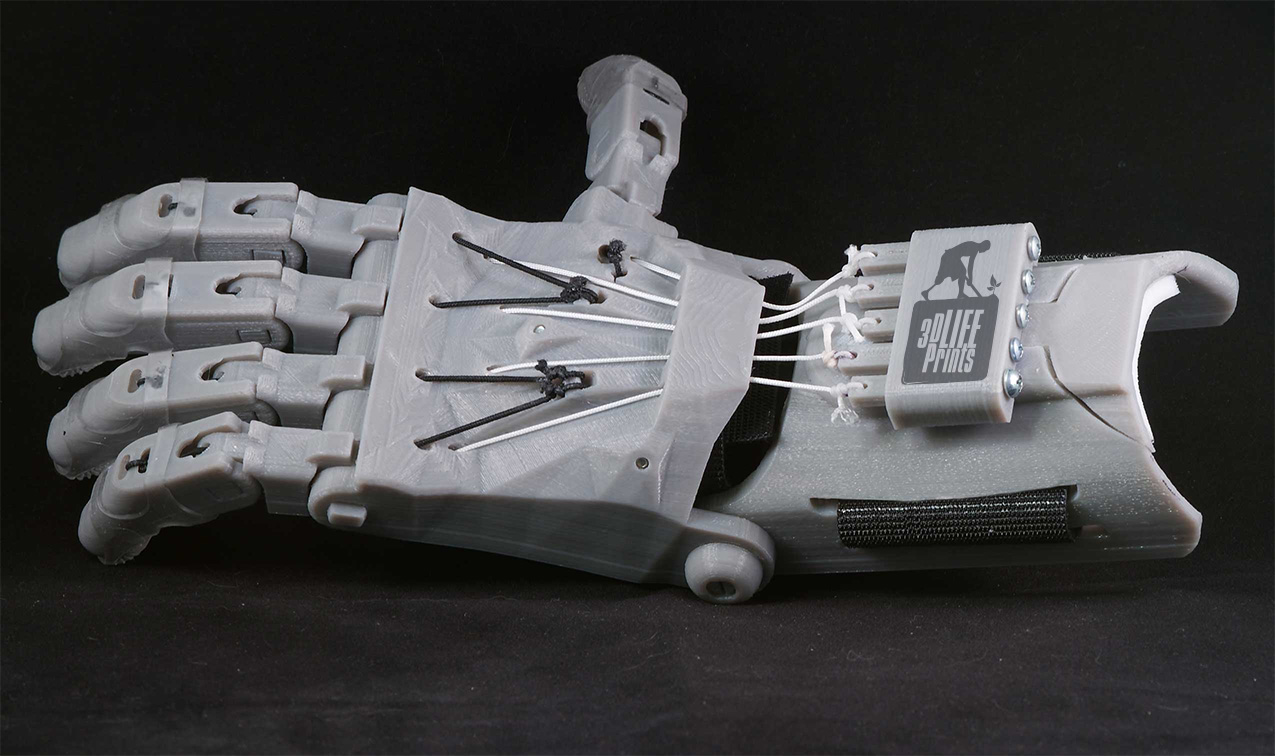
The technology behind 3D printing was developed in the 80's, and it was originally used to make prototypes of invention ideas. [1] Since then, 3D printing applications have expanded to virtually every industry. With increased popularity, the cost of owning a 3D printer has dropped, and the latest models can print much faster. These reasons coupled with the simultaneous boom of DIY resources available on the web have allowed this technology to surge into the lives of many forward thinkers.[2] In keeping with the entrepreneurial spirit of this exciting new tech, several African initiatives are taking 3D printing in unprecedented directions.
Afate Gnikou from Togo is one shining example. He is a systems developer from the nation's capital of Lomé who has invented a functional 3D printer using components from discarded office printers, scanners, and old computers. Togo and other West African countries have become a dumping ground for electronic waste in recent years [3], so he was able to find most of the parts nearby. His homemade printer took first prize at the 10th International Conference of Barcelona’s Fabrication Laboratory. Gnikou accomplished his work with the help of West Africa's first makerspace, a community location for sharing and learning about tech solutions. It's called Woelab and is also located in Lomé. [4]
Where did Gnikou go from there? He didn't just think about 3D printing applications in Togo, or anywhere else on earth for that matter. He entered the 2013 International Space Apps Challenge with the proposal that space colonization efforts could recycle and reuse old electronics in a similar fashion as he did. Out of 700 submissions, it received honorable mention for best mission concept. [5]
A completely different but no-less fascinating use of 3D printing can be seen in Sudan and Kenya. Several groups are harnessing the new tech to fabricate medical prosthetics that seek to improve the quality of life for amputees.
There are more than 50,000 amputees in war-torn Sudan today.[6] In 2013, a California-based manufacturing company called Not Impossible Labs brought 3D printing equipment and expertise to Sudan with the goal to create prosthetic limbs for a boy named Daniel who lost both arms in an explosion. [7] Project Daniel didn't stop there though. The next step was to teach members of the community how to replicate the process for other amputees with a sustainable makerspace. According to Not Impossible, locals continue to roll out new prosthetics weekly. [8]
3D LifePrints, a startup headquartered in Nairobi, is doing similar work. The following is included in their mission statement:
"To seek out those in need of medical prosthetics, focusing on developing nations, and to provide them with options for a range of affordable, functional, durable, mechanically simple, aesthetically pleasing and highly customised products, utilising 3D printing and mobile 3D scanning technologies wherever possible. [9]"
They have succeeded in this goal by creating prosthetics that are much more affordable than the traditional ones- artificial hands are being made for less than $100 instead of $1000s. They incorporate cutting-edge practices such as matching the patient's implant color with their skin tone and using a hardy system that can resume a project if interrupted by a power outage. [10]

As seen from these examples, 3D printing is not just a tool used by western innovators. Many Africans are channeling their creativity into this technology to overcome obstacles and make changes in their communities. The 3D printing industry is expected to jump in value from $2.5 billion in 2013 to $16 billion by 2018 [4], so nations who create makerspaces now may find it a very profitable venture. It is exciting to live in a world where the sharing of ideas and the motivation of dedicated people can incite change.
References
[1] http://3dprintingindustry.com/3d-printing-basics-free-beginners-guide/history/
[2] http://www.entrepreneur.com/article/238808
[3] http://www.pcworld.com/article/2878492/west-africa-turns-into-dumping-ground-for-ewaste.html
[4] http://newafricanmagazine.com/3d-printing-revolution/#sthash.ZSgwFHfb.dpuf
[5] https://open.nasa.gov/blog/global-award-winners-for-the-2013-international-space-apps-challenge/
[7] https://www.youtube.com/watch?v=SDYFMgrjeLg
[8] http://media.wix.com/ugd/9bcbad_b72353cd3bed48f49391924d4a7448a9.pdf
[9] http://www.3dmobility.org/
Additional Videos
Afate’s 3D printer in action!
Project Daniel summary video!

